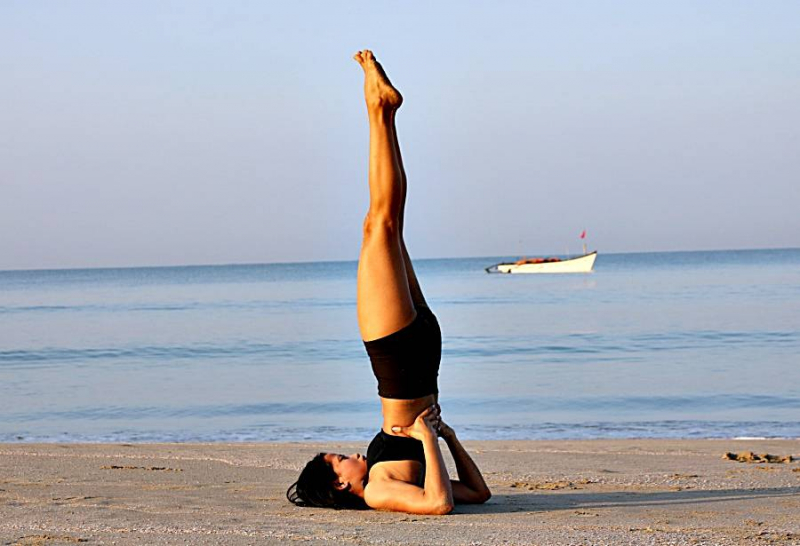Shoulderstand (Sarvangasana)

Sarvangasana or Shoulderstand is the second fundamental pose that everyone who wants to exercise yoga should know. It is an inverted stance in which the body is supported by the shoulders. Sarva denotes completeness. Sarvangasana, which literally means "all parts," strengthens the entire body. The position is known as the "Queen of āsanas."
The chin is placed against the throat in this posture, which regulates the thyroid gland, which in turn balances all other glands in the body, ensuring the healthy functioning of all body systems and organs.
The Shoulderstand clears energy blockages in the neck and relieves stress in the neck and shoulder area. It directs energy to the solar plexus while also stimulating the viuddha cakra.
The posture stimulates the thyroid gland, which is responsible for regulating metabolism, protein synthesis, heart rate, blood pressure, and calcium levels. The blood is cleansed, circulation is strengthened, and the posture helps to prevent kidney disease, bone disease, and muscle weakness. Varicose veins and constipation are alleviated, as are mental sluggishness, sadness, and sleeplessness.
Step by step:
- Place your yoga mat on the floor and position your body with the blankets as shown above. Begin to walk your shoulders underneath your upper back, feeling the chest rise gradually, with your legs bowed and feet on the floor (as though preparing for the Bridge pose).
- Coming into Bridge pose, lift your hips off the mat and extend your arms to the ground, palms facing down as if your hands could touch your heels.
- To elevate onto the balls of the feet and extend one leg up, press firmly into the palms and use them as leverage.
- Bend your elbows, lay your hands on your low back to form a shelf, and then extend the next leg up. Don't move your head to the side to look around the room after you've raised your legs because this can harm your neck. Maintain a straight neck and upward gaze instead.
- For extra stability, lift up through the balls of your feet, walking your hands further up the back. To support opening the upper back, feel the chest reaching toward the chin.
- To straighten your body, move your hips toward the front of the room and your feet toward the back. This will assist you in achieving proper alignment, with your hips over your shoulders and your feet over your hips. (Do not bring your body totally vertical if you are not using blankets or other supports.)
- Hold the posture for at least 10 breaths.
- Bring your feet back over your head to come out of Shoulderstand and into Plow posture, slowly rolling out of the Plow.
Beginner’s Tips:
- Use blankets as pillows to shield your neck from extra pressure if you're a newbie. If you don't know how to use blankets, you can ask a yoga instructor in an online yoga session.
- If you turn your head while in the Shoulderstand stance, it will put tension on your spine and neck.
Common Mistakes
- Students frequently perform Shoulderstand with their buttocks protruding and their feet over their foreheads rather than over their hips. The entire stance is thrown off by this. Tuck your shoulder blades under your back and keep your heels over your hips to avoid this problem.
- If you don't keep your core engaged throughout this position, it will be difficult to properly elevate your hips, which will make walking your hands up your back more difficult. Throughout the activity, consciously engage your core.
- Maintaining proper shoulderstand form necessitates maintaining a straightforward gaze. You risk damaging your neck if you swivel your head to look at others or watch the instructor. If you have to, close your eyes to avoid the desire to look about.












